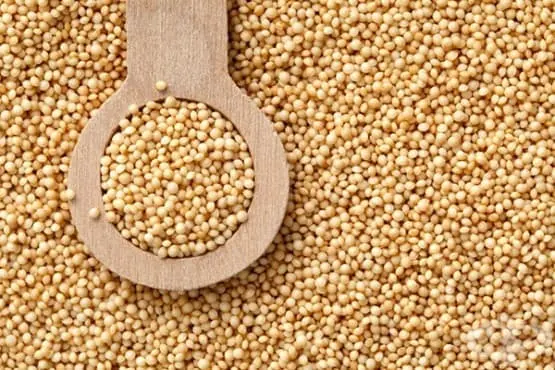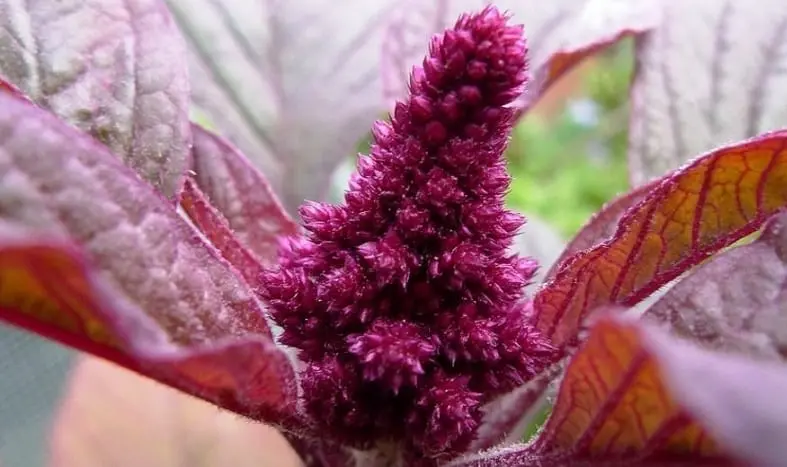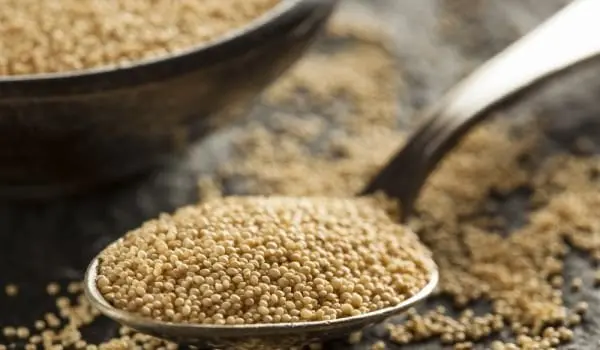Contents
Description
For eight thousand years, amaranth is a valuable food crop of South America’s lands – its name was “the bread of the Incas” and “the wheat of the Aztecs.”
Though in Europe, wild amaranth has long been famous as a garden weed, but now the situation is changing. And the UN Food Commission recently named this plant “a plant for the 21st century.”
Amaranth is an annual herb of the amaranth family, with small flowers collected in lush panicle inflorescences. And although it is not a grain crop, seeds are often called grain and are placed on a par with wheat, rye, and barley.
Amaranth is excellent green manure. It enriches the soil with nitrogen and stimulates soil microorganisms’ activity.
Firstly, the plant is very unpretentious: it survives during drought periods and adapts to any soil. Secondly, obviously, some species, such as bluish and upturned amaranth, are very aggressive cosmopolitan weeds.
We should mention that flower growers also love this plant: bright and elegant flowers will decorate any area, and high “hedges” make it look awe-inspiring.

Today amaranth is used everywhere: fodder, decorative, grain, and vegetable varieties have been bred.
Composition and calorie content
Amaranth’s composition is rich in valuable nutrients. Here are just a few of them: Vitamins: A, C, K, PP, group B. Trace elements: Mn, Fe, Zn, Se, Cu. Macronutrients: Na, Mg, Ca, P, K. Flavonoids, polyphenols. Protein and amino acids, including lysine and tryptophan. Antioxidant amarantine. Alimentary fiber. Omega-3 and -6 fatty acids. Pectins, starch, pigments. Lipids and squalene, which has anti-cancer properties.
100 g of amaranth contains about 14 g of protein, 70 g of carbohydrates, 7 g of fat, 7 g of fiber, and 370 kcal. Its seeds and leaves have 30% more protein than oats and 50% more protein than soybeans.
- Calorie content 371 kcal
- Proteins 13.56 g
- Fat 7.02 g
- Carbohydrates 58.55 g
8 useful properties of amaranth

- Amaranth is a storehouse of vitamins and minerals. Its grains contain unsaturated fatty acids, calcium, magnesium, phosphorus, iron, vitamins B1, B2, C, E, D.
- In 1972, Australian physiologist John Downton discovered the essential amino acid lysine in amaranth seeds found in many proteins. In particular, without lysine, collagen cannot be synthesized, due to which the skin retains its elasticity and the vessels – elasticity.
- Moreover, in terms of this amino acid content, amaranth is 2 times higher than wheat and 3 times higher than corn.
- And in terms of the nutritional value of protein, which is rich in this grain, it is much ahead of all traditional grain crops and is comparable to cow’s milk.
- Another indisputable advantage of the plant is its composition of unsaturated hydrocarbon squalene, which in the process of chemical reactions with water saturates the tissues of the body with oxygen.
- Squalene fights cancer cells, improves immunity, and preserves youth. Moreover, it is non-toxic and safe in any concentration.
- Until recently, shark liver was the main source of squalene. It is much more profitable to obtain a valuable substance from amaranth – it contains as much as 8% in the first pressing oil! (the concentration of squalene in shark liver is only 2%).
- Amaranth can also be used as an additional source of pectin. This substance lowers the cholesterol level in the blood, protects the liver from toxins, and promotes the elimination of heavy metals and radionuclides from the body.
Amaranth harm

Despite the significant benefits of amaranth, it is worth mentioning the possible harmful component of the plant. Like any product, it can cause allergic reactions or individual intolerance.
It is worth checking this out with a small dose. It is always worth starting to take amaranth with small amounts: 1 tbsp. Seedlings per day. It is not recommended to take this cereal for patients with pancreatitis, cholecystitis, urolithiasis, and cholelithiasis.
The introduction of amaranth seedlings into the diet is recommended for the body’s general health improvement, the prevention of many diseases, and the body’s toning.
Amaranth in cooking

In some parts of the world, amaranth is grown solely to use its seeds, considering all other components to be simply unnecessary. But in Japan, for example, amaranth is valued for greens, comparing it to fish meat.
In their daily diet, Latin American residents, Asia, and Africa cannot do without amaranth.
It is noteworthy that in China, this plant has taken root exclusively due to its feeding properties. Bacon, in which juicy and tender meat is layered with thin strips of bacon, is obtained only on those farms where amaranth is added to pigs’ daily diet.
For instance, the greatest popularity and prevalence of the production of amaranth products received in America. However, here they release just a huge amount of food with the addition of amaranth to it. Many people probably know that the idea of vegetarianism is prevalent in the United States.
So thanks to this plant, you can feast on “meat” minced meat consisting entirely of amaranth and not feel deprived.
Moreover, on the shelves of American stores it will not be difficult to find many products with amaranth added to them:
- butter;
- flour;
- pure grains;
- starch;
- Other food products.
Why is amaranth oil useful?
The list of biologically active substances in the composition of amaranth oil is very significant. The fat contains polyunsaturated fatty acids – oleic, linoleic, and linolenic, which improve cholesterol metabolism.
The hydrocarbon squalene deserves special attention, the main biologically active component of amaranth oil, one of the intermediates in cholesterol biosynthesis.
Amaranth porridge with blueberries

Ingredients
- Amaranth groats ½ cup
- Coconut milk 1 glass
- Blueberries 1 glass
- Maple syrup 1 tablespoon
- Vanilla pod ½ piece
- Salt to taste
- Coconut cream 2 tablespoons
Preparation
- Soak the crop overnight
- Drain the water and dry the grain. Mix with one glass of water (or coconut milk) and a pinch of salt.
- Bring to a boil and reduce heat, simmer for 15 minutes.
- Please turn off the heat and leave it in a saucepan for 10 minutes.
- In another bowl, combine blueberries, sweetener, and nut milk/cream. Chop the contents of the vanilla pod and the vanilla itself and stir in the blueberries.
- Serve by first pouring the blueberry sauce into the bottom of the bowl, then place the amaranth and pour the rest of the sauce on top










Natakakujua beiyakenasoko rake